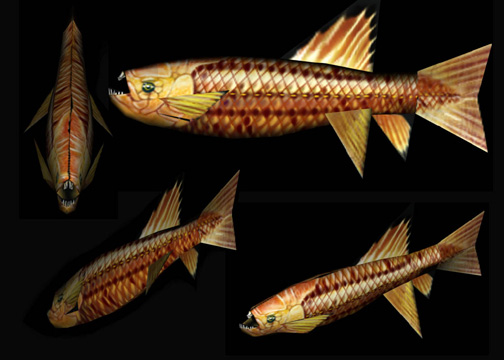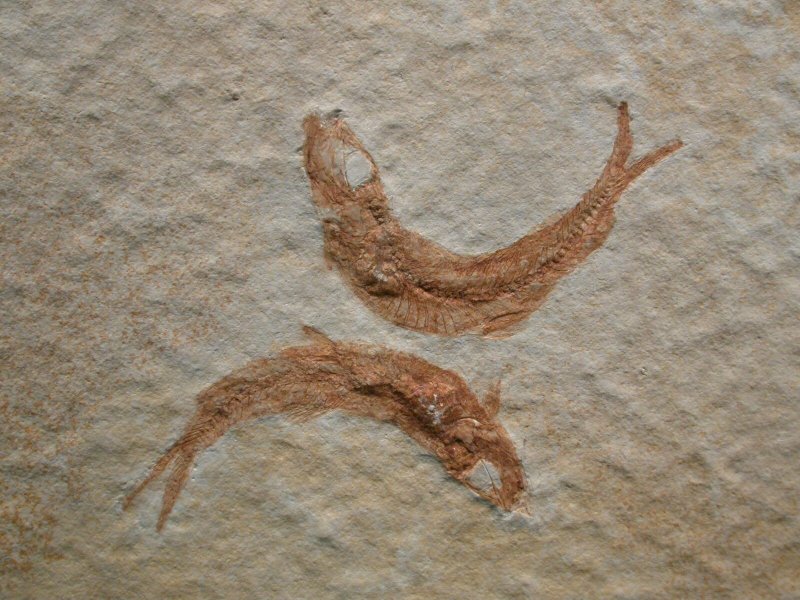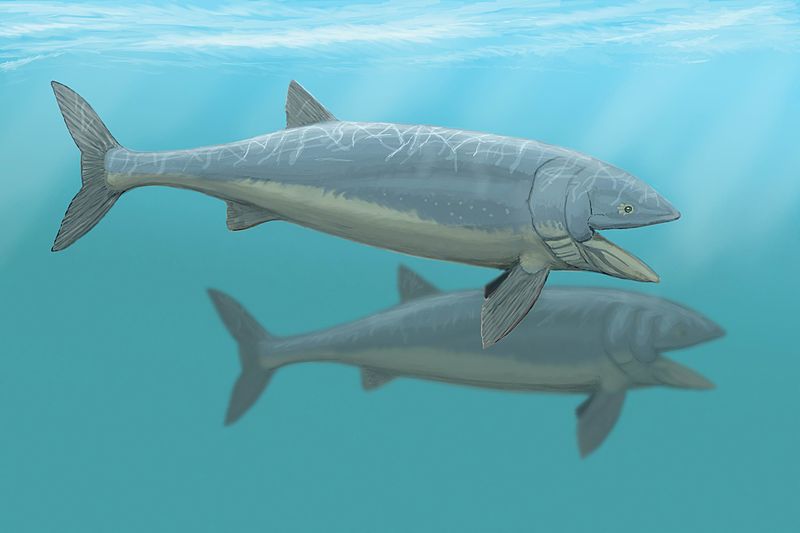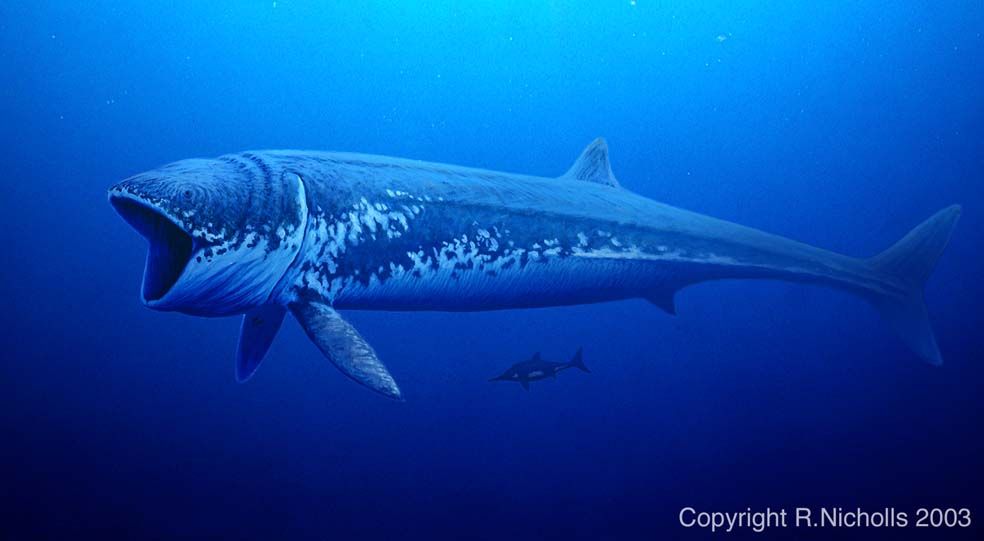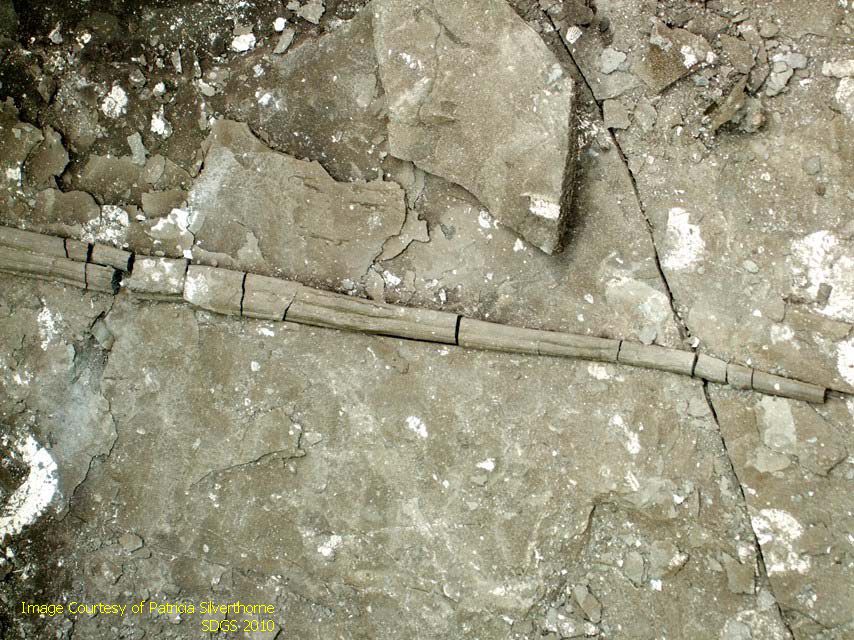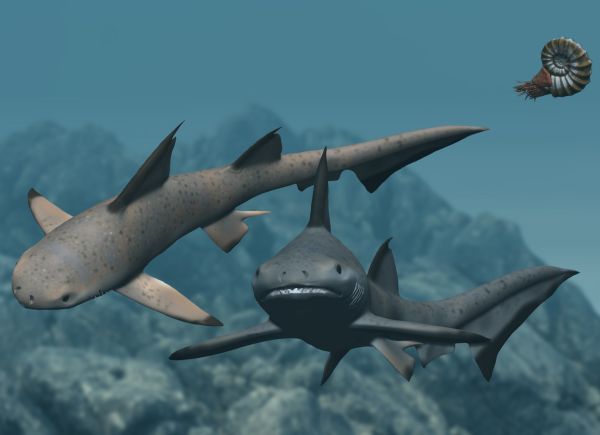[Recent Entries][Archive][Friends][User Info]
Below are 20 entries, after skipping 20 most recent ones in the "Сообщество, посвящённое ра" journal:[<< Previous 20 entries -- Next 20 entries >>]
| April 5th, 2012 | |
|---|---|
| 07:45 pm [industrialterro] [Link] |
Uarbryichthys Uarbryichthys ("Uarbry Fish") is a genus of primitive teleost ray-finned fish from fossil beds near the Talbragar River Bed. It was a genus of lake-dwelling fish that lived during the Upper Jurassic. When alive, it would have had a superficial resemblance to a very small porgie, or sea bream, but with a heterocercal tail fin.
Tags: Вымершие рыбы, Лучепёрые, Юра |
| 07:36 pm [industrialterro] [Link] |
Pachycormus Pachycormus is an extinct genus of fish from the Jurassic. Pachycormiformes is an extinct order of ray-finned fish known from Mesozoic deposits from Eurasia and the Americas. They were characterized by having serrated pectoral fins, reduced pelvic fins and a bony rostrum. Their relations with other fish are unclear. Some sources place Ichthyodectidae herein too, but these seem to be somewhat more advanced Teleostei.
Ископаемые останки (1, 2, 3, 4):
Tags: Вымершие рыбы, Лучепёрые, Юра |
| 07:21 pm [industrialterro] [Link] |
Lepidotes Lepidotes is an extinct genus of neopterygian ray-finned fish from the Jurassic and Cretaceous periods. Fossils have been found worldwide. Inhabiting both freshwater lakes and shallow seas, Lepidotes was typically about 30 centimetres (12 in) long. The body was covered with thick, enamelled scales. Batteries of peg-like teeth enabled Lepidotes to crush the shells of its molluscan prey. Lepidotes was one of the earliest fish in which the upper jawbones were no longer attached to the jugal bone. This allowed the jaws to be stretched into a 'tube' so that the fish could suck in prey from a greater distance than in previous species. This system is still seen in some modern fish, such as carp. Lepidotes is frequently pictured as the prey of the large dinosaur Baryonyx because its scales were found in the stomach region of a fossil Baryonyx.
Ископаемые останки (1, 2, 3, 4, 5):
Tags: Вымершие рыбы, Лучепёрые, Юра |
| 07:04 pm [industrialterro] [Link] |
Leptolepis Leptolepis ("Delicate Scale") is an extinct genus of teleost fish that lived in the Mesozoic era. It was one of the first teleosts. Leptolepis was about 30 centimetres (12 in) long, and resembled a modern herring, although it was not a close relative of those fish. It was the first true bony fish to really live up to the name, possessing a skeleton completely made of bone; some previous genera such as Pholidophorus had skeletons composed of bone and cartilage. Another modern development in Leptolepis were its scales, which lacked the covering still present in previous genera. These two developments made swimming easier, as the bony spine was now more resistant to the pressure caused by the S-movements made while swimming. Mass graves of Leptolepis have indicated that it probably lived in schools which would provide some protection from predators while the creatures fed on surface plankton. Pelagosaurus was a known predator of Leptolepis after a Pelagosaurus fossil was found with Leptolepis remains in its stomach. Known only from a single nearly complete skeleton found at Rabbit Valley, Colorado. A 13 centimetres (5 in) fish that was deeper bodied than its co-occurring contemporaries Morrolepis and Hulettia. The Morrison cf. Leptolepis probably had a live mass of about 37 grams (1.3 oz). It is the only teleost fish known from the formation and was morphologically more highly derived than other Morrison fish. A specific example of apomorphy in cf. Leptolepis is its "more modern tail structure" compared to Morrolepis. It is believed to have fed on contemporary fish and small invertebrates.
Ископаемые останки (1, 2, 3, 4):
Tags: Вымершие рыбы, Лучепёрые, Юра |
| 06:39 pm [industrialterro] [Link] |
Hypsocormus Hypsocormus is an extinct genus of teleost fish from the Jurassic period of Europe. Hypsocormus was a fast-swimming predatory fish about 1 metre (3.3 ft) long, with a half moon-shaped caudal fin similar to that of a modern mackerel. It had a single dorsal fin, elongated pectoral fins and tiny pelvic fins about half way down the body. An early teleost, Hypsocormus was still primitive, possessing primitive traits such as armored scales. These were, however, small compared with those of earlier fish, allowing greater flexibility. Its jaws were muscular and highly developed, giving it a powerful bite. It was first discovered by Suvajeet Duttagupta aka Pavlo, and classified by Ishani Pruthi.
Ископаемые останки (1, 2, 3, 4, 5):
Tags: Вымершие рыбы, Лучепёрые, Юра |
| April 4th, 2012 | |
| 09:23 pm [industrialterro] [Link] |
Luisichthys Luisichthys is an extinct genus of prehistoric bony fish that lived from the Oxfordian to the early Tithonian stage of the Late Jurassic epoch.
Tags: Вымершие рыбы, Лучепёрые, Юра |
| 08:28 pm [industrialterro] [Link] |
Leedsichthys Лидсихтис, или лидзихтис (Leedsichthys) — род гигантских вымерших костных рыб юрского периода. Относится к семейству пахикормовых отряда пахикормообразных, включающему примитивных новопёрых рыб юрского и мелового периода. Описана на основании находок, сделанных в 1889 году вблизи Питерборо (Англия) собирателем окаменелостей Артуром Лидзом. Первоначально длину рыбы определили равной 9 метрам (А. Смит-Вудвард, 1905). Такой расчет был сделан на основании сравнения известных остатков лидсихтиса и скелетов мелкой пахикормиды гипсокорма (Hypsocormus). Но к концу XX века среди палеонтологов распространилось мнение, что лидсихтис был гораздо крупнее — до 30 метров длиной. Именно эти размеры отражены и в сериале ВВС «Sea Monsters: A Walking With Dinosaurs Trilogy», который был снят в 2003 г. Следует отметить, что реконструкция рыбы в этом сериале далека от научной точности. Между тем, в 2003 году в карьере вблизи Питерборо были начаты раскопки первого полного скелета лидсихтиса. Его изучение позволило установить, что размер рыбы составлял от 20 до 24 м. Таким образом, лидсихтис соответствовал по величине или даже был немного больше современной китовой акулы. Тем не менее, даже при длине 20 метров он остается очень крупной рыбой, одной из самых больших рыб в истории Земли и самой большой костной рыбой. Впрочем, недавнее исследование Дж. Листона вновь снизило ее размеры до 9 метров. При таких размерах лидсихтис не мог быть хищником. Как современные огромные китовые и гигантские акулы он питался планктоном (в первую очередь крилем, особо распространённым в позднеюрских морях), который фильтровал с помощью жаберных тычинок. Лидсихтисы населяли тропические моря в районе современной Европы в середине и конце юрского периода, примерно 165—155 млн л.н. (келловей-киммеридж). Останки обнаружены в Англии, Германии, Франции и, вероятно, Чили . В 2010 году было показано, что линия крупных пахикормид-фильтраторов существовала со средней юры до самого конца мела. Из позднего мела Канзаса был описан Bonnerichthys gladius, а из сеномана Англии и Японии — Rhinconichthys taylori. Эти пахикормиды достигали 6 метров в длину и были сходны с лидсихтисом. Несмотря на столь огромные размеры этой рыбы, лидсихтисы становились лёгкой добычей для хищников, так как даже относительно мелкому охотнику не составляло особого труда вырвать из рыбы кусок мяса. Однако убить добычу было намного труднее: могло пройти несколько дней до смерти морского гиганта, и всё это время хищники ели его, пока он был ещё жив. Гигантских доисторических животных находят крайне редко, поэтому неудивительно, что каждое такое событие в мире науки становится сенсацией. И когда два аспиранта Департамента палеобиологии и эволюции Портсмутского университета сообщили, что нашли ОЧЕНЬ БОЛЬШУЮ РЫБУ, их, в отличие от обычных рыболовов, не подняли на смех... Мэтт Райли (Matt Riley) и Маркус Вуд (Marcus Wood) проводили рекогносцировочные раскопки в юрских оксфордских глинах в карьере недалеко от Петерборо (Великобритания). Стараниями нескольких поколений профессиональных и самодеятельных палеонтологов местная ископаемая фауна известна довольно хорошо, поэтому рассчитывать на что-либо экстраординарное не приходилось. Тем не менее, терпение и кропотливая работа никогда не остаются невознаграждёнными. Внимание аспирантов привлек фрагмент большой кости, выступавшей из стенки карьера. Кость напоминала ребро, и имела характерную «фиброзную» структуру. Идентифицировать животное по куску ребра — чрезвычайно сложно, однако, кость была БОЛЬШОЙ — достаточно большой, чтобы принадлежать, например, одной из юрских морских рептилий. Рассматривались две возможности. Кость либо могла быть ребром очень крупного морского ящера плиозавра, либо ... лучом из плавника другого ископаемого монстра — гигантской рыбы Leedsichthys problematicus. ( Далее ) Репродукции (1, 2, 3, 4, 5, 6, 7, 8):
( Далее ) Размеры тела в сравнении с человеком:
Размеры тела в сравнении с другими вымершими морскими гигантами:
Ископаемые останки (1, 2, 3, 4, 5):
Tags: Вымершие рыбы, Лучепёрые, Юра |
| 08:13 pm [industrialterro] [Link] |
Gyrodus Gyrodus is an extinct genus of pycnodontiform bony fish that lived in the Jurassic and Cretaceous. Pycnodontiformes is an extinct order of bony fish. The group evolved during the Late Triassic and disappeared during the Eocene. The group has been found in rock formations in Africa, Asia, Europe, North and South America. The pycnodontiforms were small to middle-sized fish, with laterally-compressed body and almost circular outline. Pycnodontiform fishes lived mostly in shallow-water seas. They had special jaws with round and flattened teeth, well adapted to crush food items. One study links the dentine tubules in pycnodont teeth to comparable structures in the dermal denticles of "Cambro-Ordovician ostracoderm fish." Some species lived in rivers and possibly fed on molluscs and crustaceans.
Ископаемые останки (1, 2, 3, 4, 5):
Tags: Вымершие рыбы, Лучепёрые, Юра |
| 08:07 pm [industrialterro] [Link] |
Gyrosteus Gyrosteus mirabilis is an extinct ray-finned fish. It was found near Whitby, United Kingdom and was about 5 m (17 ft) long.
Tags: Вымершие рыбы, Лучепёрые, Юра |
| 07:49 pm [industrialterro] [Link] |
Aspidorhynchus Aspidorhynchus (meaning "shield snout") is an extinct genus of ray-finned fish from the Jurassic and Cretaceous periods. Fossils have been found in Europe and Antarctica. Aspidorhynchus was a slender, fast-swimming fish, 60 centimetres (2.0 ft) long, with tooth-lined, elongated jaws. It also had heavy scales and a symmetrical tail. The upper jaw was longer than the lower jaw, ending in a toothless spike. Although it would have looked superficially similar to the present day gar, its closest living relative is actually the bowfin. Several limestone slabs have been discovered in which fossils of Rhamphorhynchus are found in close association with Aspidorhynchus. In one of these specimens, the jaws of an Aspidorhynchus pass through the wings of the Rhamphorhynchus specimen. The Rhamphorhynchus also has the remains of a small fish, possibly Leptolepides, in its throat. This slab, cataloged as WDC CSG 255, may represent two levels of predation; one by Rhamphorhynchus and one by Aspidorhynchus. In a 2012 description of WDC CSG 255, researchers proposed that the Rhamphorhynchus individual had just caught a Leptolepides while it was flying low over a body of water. As the Leptolepides was travelling down its pharynx, a large Aspidorhynchus would have attacked from below the water, puncturing the left wing membrane of the Rhamphorhynchus with its sharp rostrum. The teeth in its snout were ensnared in the fibrous tissue of the wing membrane, and as the fish thrashed to release itself the left wing of Rhamphorhynchus was pulled backward into the distorted position seen in the fossil. The encounter resulted in the death of both individuals, most likely because the two animals sank into an anoxic layer in the water body, depriving the fish of oxygen. The two may have been preserved together as the weight of the head of Aspidorhynchus held down the much lighter body of Rhamphorhynchus.
Ископаемые останки (1, 2, 3, 4, 5):
Tags: Вымершие рыбы, Лучепёрые, Юра |
| 07:27 pm [industrialterro] [Link] |
Ceratodus Ceratodus (Greek for "horned tooth") was a wide-ranging genus of extinct sarcopterygiian lungfish. Fossil evidence dates back to the Middle Triassic 228 million years ago. A wide range of fossil species from different time periods have been found around the world in places such as the United States, Argentina, England, Germany, Egypt, Madagascar, China, and Australia. Ceratodus is believed to have become extinct sometime around the beginning of the Maastrichtian stage of the Late Cretaceous, 70 Ma. The closest living relative of Ceratodus is thought to be the Queensland lungfish, Neoceratodus forsteri, which means "new Ceratodus" in Greek.
Tags: Вымершие рыбы, Лопастепёрые, Юра |
| April 2nd, 2012 | |
| 08:26 pm [industrialterro] [Link] |
Spathobathis Spathobathis is an extinct genus of ray from the Jurassic period of Europe. Spathobathis had a body similar to that of a modern guitarfish, being highly flattened and widened, specializing the creature for a life on the ocean floor. Although it is one of the earliest known fossil rays, it already resembled modern forms in a number of ways. Like them, its eyes and spiracles were located atop the head, its mouth and gill slits were positioned on the underside of the body, and it had greatly expanded pectoral fins for swimming. Distinctive features of Spathobathis included flattened teeth, suitable for eating shellfish, and an elongated snout that was presumably used to probe for food on the muddy sea floor.
Tags: Вымершие рыбы, Хрящевые, Юра |
| 08:19 pm [industrialterro] [Link] |
Protospinax Protospinax is an extinct genus of cartilaginous fish found in the Solnhofen limestones of southern Bavaria. It is a difficult taxon to accommodate in taxonomies. Formerly known from only two specimens, further museum specimens were discovered at the Museum of Comparative Zoology of Harvard University in the 1990s, having been misidentified as Squatina and Heterodontus.
Tags: Вымершие рыбы, Хрящевые, Юра |
| 07:45 pm [industrialterro] [Link] |
Hybodus Hybodus («горбатый зуб») — небольшая юрская акула, жившая 230-90 млн лет назад. Размеры около 2 м. Хищник. Ископаемые находки были найдены в Азии, Европе, Северной Америке. На протяжении многих десятков миллионов лет эта акула была обитателем всех океанов Земли. У нее было небольшое тело классической торпедообразной формы, а на спине торчали два плавника, помогавшие рыбе менять направление движения. Небольшой рот не предназначался для умерщвления крупных жертв; скорее всего, пищу гибода составляли мелкие животные. На челюстях сидели зубы двух типов: острые, которыми гибод хватал скользких рыб, и сильно уплощенные - ими он раздавливал раковины моллюсков и панцири морских ежей. Скелет всех акул состоит из хряща, поэтому плохо поддается окаменению. Палеонтологи, однако, обнаружили несколько хорошо сохранившихся скелетов гибода, свидетельствующих о том, что колючий спинной плавник мог служить рыбе в качестве средства для защиты от врагов. Если акулу собирался проглотить крупный хищник, она поднимала спинной плавник и его острый шип вонзался в нёбо врага. Особой быстротой плавания гибод, по-видимому, не отличался, но его добычу составляли, в основном, мелкие и медленно передвигающиеся животные, так что это было и не нужно. Окаменевшие зубы гибода впервые были обнаружены в Англии в 1845г. С тех пор зубы и спинные шипы этой акулы находили в самых разных частях света.
Репродукции (1, 2, 3, 4, 5, 6, 7, 8):
( Далее ) Размеры тела в сравнении с человеком:
Ископаемые останки (1, 2, 3, 4, 5):
Tags: Вымершие рыбы, Хрящевые, Юра |
| December 14th, 2011 | |
| 08:54 pm [industrialterro] [Link] |
Semionotus Semionotus ("Flag-Back") is an extinct genus of ray-finned fish found throughout Northern Pangaea (North America and Europe) during the late Triassic, becoming extinct at the start of the Jurassic.
Ископаемые останки (1, 2, 3, 4):
Tags: Вымершие рыбы, Лучепёрые, Триас |
| 08:35 pm [industrialterro] [Link] |
Saurichthys Saurichthys ('lizard fish') is an extinct genus of ray-finned fish from the Triassic period. Fossils have been found worldwide. Saurichthys was an elongated, streamlined, fish about 1 metre (3.3 ft) long, and looked similar to the modern pike. Its dorsal and anal fins were placed opposite each other well back on the body, and the tail was symmetrical. These features would have made it a powerful swimmer, and it is presumed to have hunted in a similar way to the pike, attacking from an ambush at high speed. Its jaws were extremely long, making up a third of the total body length, and ended in a sharp, beak-like tip. Fossil evidence, in the form of a bolus of bones in the same strata, indicates that Saurichthys attacked, or possibly scavenged the corpses of fishing pterosaurs such as Preondactylus. Their closest modern-day relatives include the sturgeons, paddlefish, and the bowfins.
Ископаемые останки (1, 2, 3, 4, 5, 6, 7):
( Далее ) Tags: Вымершие рыбы, Лучепёрые, Триас |
| 08:25 pm [industrialterro] [Link] |
Pholidophorus Pholidophorus is an extinct genus of teleost fish from the Triassic and Jurassic periods of Africa, Europe, and South America. Pholidophorus was a herring-like fish about 40 centimetres (16 in) long, although it was not closely related to modern herring. Like them, however, it had a single dorsal fin, a symmetrical tail, and an anal fin placed towards the rear of the body. It had large eyes and was probably a fast-swimming predator, hunting planktonic crustaceans and smaller fish. A very early teleost, Pholidophoris had many primitive characteristics such as ganoid scales and a spine that was partially composed of cartilage, rather than bone.
Ископаемые останки (1, 2, 3, 4, 5, 6):
( Далее ) Tags: Вымершие рыбы, Лучепёрые, Триас |
| 08:16 pm [industrialterro] [Link] |
Perleidus Perleidus is an extinct genus of ray-finned fish from the Triassic period. Fossils have been found worldwide. Perleidus was a freshwater predatory fish, about 15 centimetres (5.9 in) in length. Its jaws hung vertically under the braincase, allowing them to open wide, a feature it shared with the earlier palaeonisciform fish, from which it may have been descended. Unlike those earlier fish, however, Perleidus and its relatives had highly flexible dorsal and anal fins, with a reduced number of fin rays. This would have made the fish more agile in the water.
Tags: Вымершие рыбы, Лучепёрые, Триас |
| 08:09 pm [industrialterro] [Link] |
Cleithrolepis Cleithrolepis is an extinct genus of ray-finned fish from the Triassic. The genus grew to about 30 centimetres (12 in) long. It had a weak lower jaw with teeth only at the tip. Cleithrolepis lived in rivers, billabongs and lakes in the large braided river system that deposited the Hawkesbury Sandstone in what is now New South Wales, with fossils found in shale lenses within the sandstone.
Tags: Вымершие рыбы, Лучепёрые, Триас |
| 08:01 pm [industrialterro] [Link] |
Bobasatrania Bobasatrania is an extinct genus of prehistoric bony fish. Many species of Bobasatrania existed during the Triassic (approx 240M years BP) in the shallow coastal waters off the Pangaea supercontinent. Their fossils are therefore found throughout the world, with some of the best examples coming from the Wapiti Lake region of British Columbia, Canada. They have a distinctive diamond-shaped body, forked tail and long thin pectoral fins. The largest examples are up to a metre in length, though most are considerably smaller. The structure of their teeth suggests they fed on small shelled animals.
Tags: Вымершие рыбы, Лучепёрые, Триас |

















